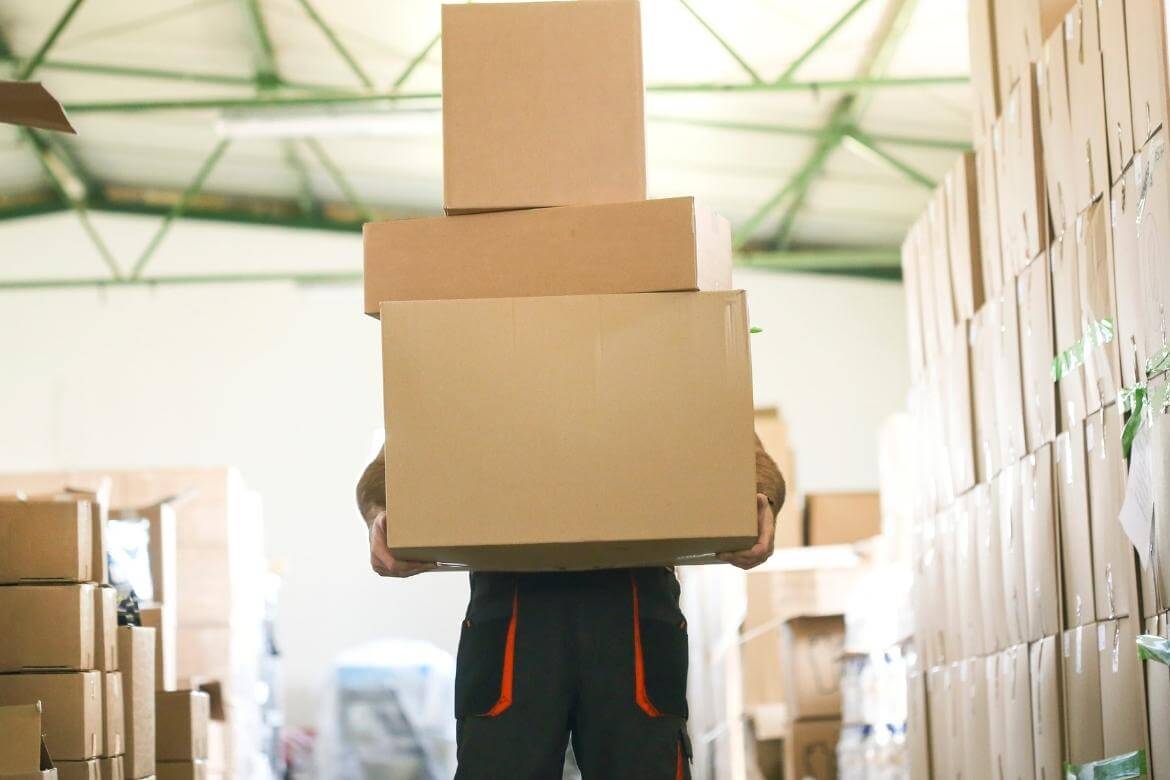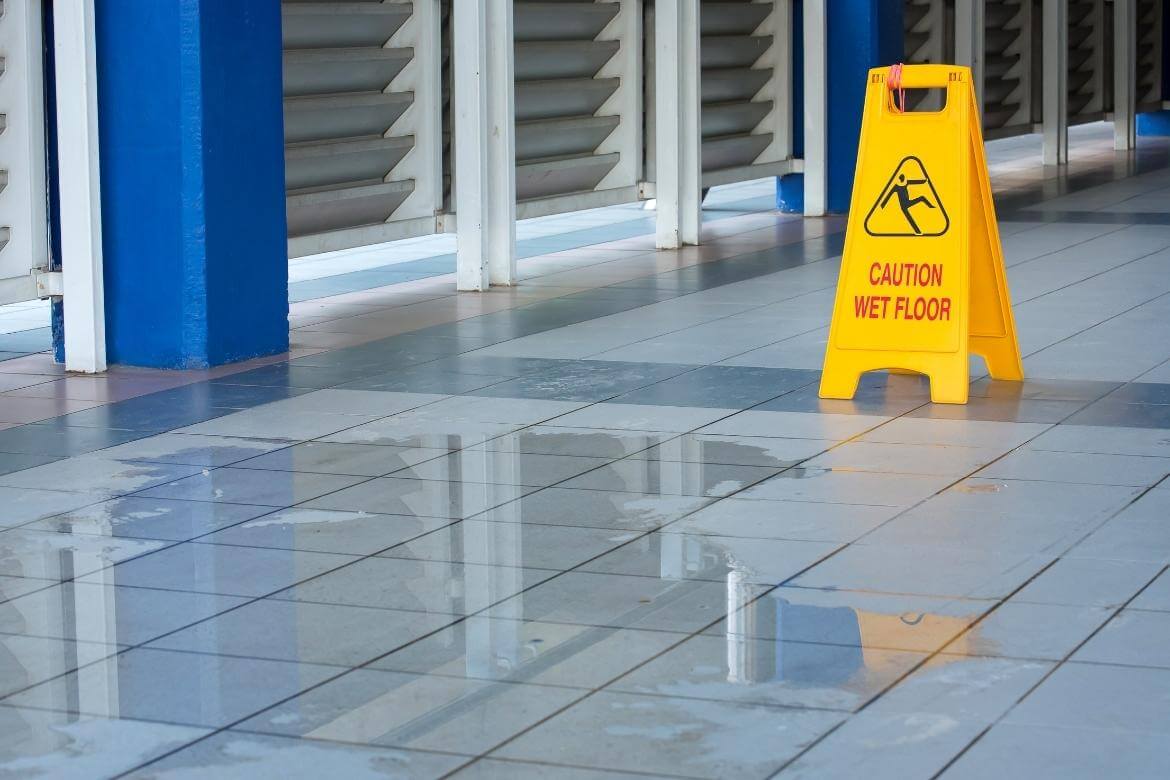19th September, 2024
Manual Handling? Think LITE!
Manual handling is the leading cause of musculoskeletal disorders at work. To avoid pulled muscles and painful joints, it's important to know how much you can safely lift, and use good handling techniques. In this blog post, we learn how to think LITE.

Manual handling is present in nearly every workplace in one form or another. You could be carrying paperwork, lifting a box, or pushing a trolley. It's all manual handling.
And when you are manual handling, you need to think LITE.
Manual handling is the leading cause of musculoskeletal disorders at work.
Every year, over 100,000 workers report new cases of work-related musculoskeletal disorders, and many more continue to suffer from long-standing musculoskeletal disorders.
And that's just the cases that get reported!
So if you want to avoid being one of the 473,000 workers known to be suffering from a work-related musculoskeletal disorder, it's important to know how much you can safely lift, and use good handling techniques.
It's not just strains you need to watch out for. Here are 7 Types Of Manual Handling Injuries And The Hazards That Cause Them.
When people are about to do manual handling, they often consider the maximum weight they can lift. Does this load look too heavy for me? Can I lift it?
But there is so much more to consider before you lift, carry, push or pull something.
One of the important requirements under the Manual Handling Operations Regulations is to assess the risk. And yes, weight is one of the things you should consider. But in this blog post, we will look at 25+ other considerations that should also be included in your assessment.
When planning manual handling, and assessing the risk, always think LITE.
LITE = Load, Individual, Task, Environment.
These four elements will help you to assess various considerations about the activity and the risks involved.

Load
The load is more than just its weight.
A saw might be light but if you hold it by its blade you're likely to hurt yourself. A pile of boxes could be light but if the top ones fall you could trip and lose your balance.
So don't just think about the load as a weight.
When you think about the load, consider all the things about the load that could make handling it a challenge. Then, address those issues and how they can be made safer.
If the load is too big and bulky, could it be broken down into smaller containers? If the load is unstable, could it be secured? Can sharp edges be wrapped? Could gloves protect you?
Maybe you shouldn't be handling it at all!
- Heavy loads
- Bulky loads
- Unstable loads
- Difficult to grasp
- Sharp edges
- Hot or hazardous loads

Individual
Don't just think about the load, but also the person handling it.
Everyone is different. And some people can handle more than others, either due to strength, medical conditions, or skills and experience.
Do they have the right training? Do they have the strength and physical capabilities to move it? Do they have any medical issues that may prevent them from safely handling? Can they get help if they need it? Is there anything you could provide that would assist them?
- Strength of individual
- Knowledge of the load and task
- Training and experience

Task
What about the task itself?
When you assess a manual handling activity, you might think about lifting a box from the floor, carrying it a few steps, and putting it down on the floor.
That's what we all seem to imagine when we think about manual handling. But that's rarely what a manual handling task looks like in the real world.
Manual handling involves lifting, carrying pushing and pulling all sorts of things. In all kinds of places!
Picking up the load might be fine, but how far do you need to carry it? Are you going to tire halfway?
Lifting the load once might be easy, but what about 50 times?
Does the task require you to hold the load away from your body, or stoop? Will that be comfortable?
Are you going to need to put the load in an awkward position?
If you get tired, can you stop?
Is there somewhere safe to put the load down?
- Avoid twisting the trunk
- Avoid stooping or reaching upwards
- Prevent holding or manipulating loads at a distance from the trunk
- Avoid tasks that demand poor posture
- Assess any frequent physical effort
- Avoid excessive lifting or lowering
- Prevent excessive carrying distances
- Prevent excessive pushing or pulling of loads
- Avoid sudden movement of loads
- Minimise prolonged physical effort
- Allow for rest or recovery periods

Environment
And finally, what about the environment? Where is the manual handling taking place?
An empty room with no obstacles? Or a busy workplace, with other people, and other activities taking place around you? Probably the latter. And that can bring other hazards to your activity.
For example, you're more likely to trip on an uneven floor if your view is limited because of the box you are carrying.
And carrying or pushing a load is more hard work in a windy environment.
So don't just consider the activity itself, but where the manual handling task will happen. How will that affect the health and safety of the operation? Is the environment safe? Will there be enough room to move safely? Are there likely to be any slip or trip hazards? Are any obstacles going to block the way?
- Space restrictions preventing good lifting postures
- Uneven, slippery, defective, unstable floors
- Changes in floor level such as steps or ramps
- A windy or dusty atmosphere
- Overcrowding of workspaces
- Extreme temperature changes
- Physical obstructions
- Poor lighting
Now that you're thinking LITE, you should be able to spot some quick and easy ways to reduce manual handling risks in your workplace.
Raise awareness with our free manual handling toolbox talk, and make sure your manual handling activities are assessed with the manual handling risk assessment template.
This article was written by Emma at HASpod. Emma has over 10 years experience in health and safety and BSc (Hons) Construction Management. She is NEBOSH qualified and Tech IOSH.
Can you handle this?
Take our manual handling elearning course and get your certificate today.
Course InfoRecent posts like this...

Manual Handling? Think LITE!
Manual handling is the leading cause of musculoskeletal disorders at work. To avoid pulled muscles and painful joints, it's important to know how much you can safely lift, and use good handling techniques. In this blog post, we learn how to think LITE.
Read Post
13 Types Of Manual Handling Injuries And The Hazards That Cause Them
It might surprise you that manual handling is responsible for over 30% of workplace injuries. For something so simple, why so many accidents? Well, it's likely to be because we don't expect anything to go wrong - we lift things all the time.
Read Post
The Importance Of Safe Manual Handling Techniques
Manual handling might not seem high risk, but it is actually one of the most common causes of workplace injuries. The importance of safe manual handling techniques can therefore mean the difference between a productive day at work or being off work with a bad back!
Read Post